These self-build Tiny Homes propose an alternative to renting
Irish social enterprise Common Knowledge is teaching people to build its Tigín Tiny Homes using sustainable materials
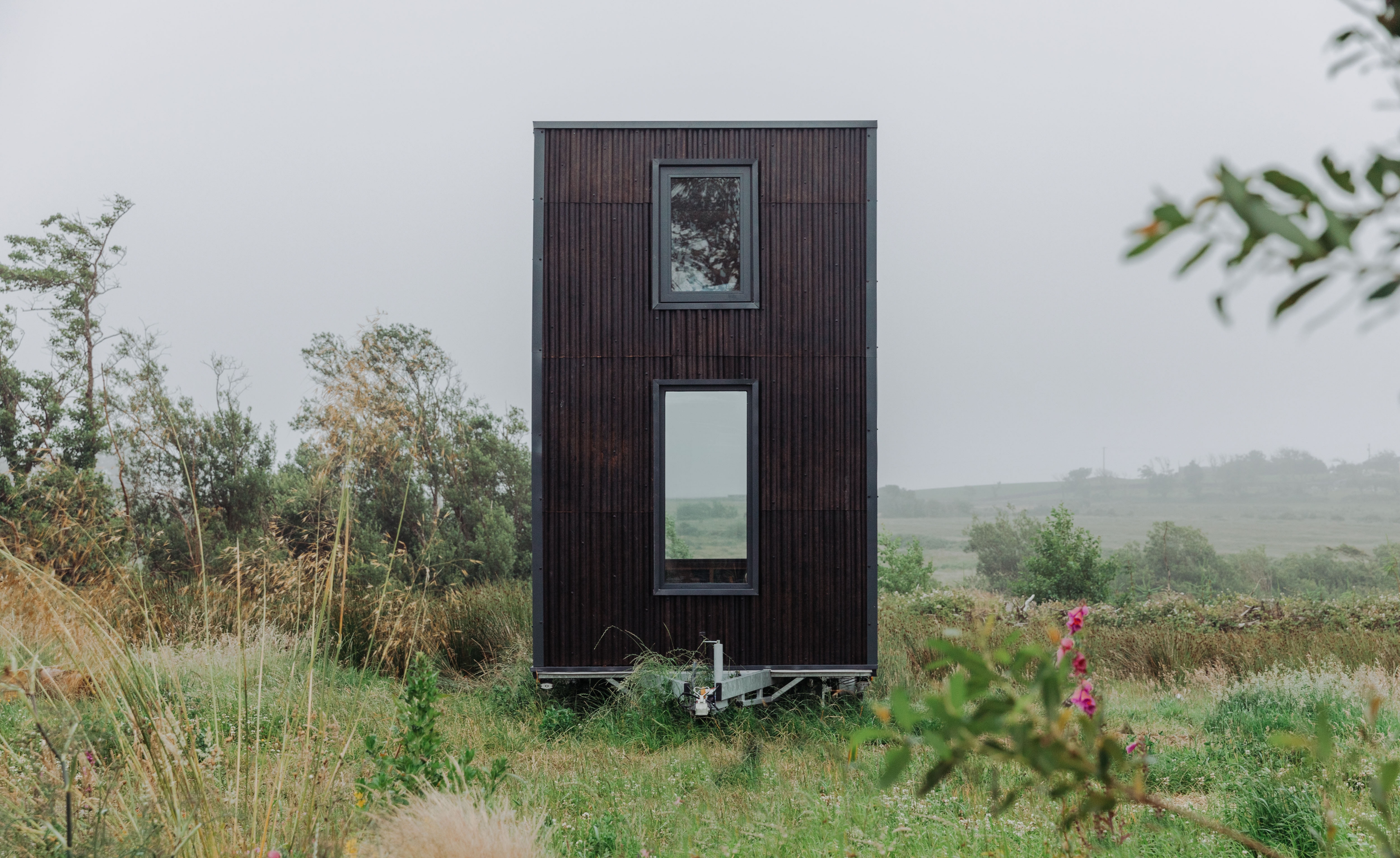
Inside Tigín Tiny Homes
There have been lots of micro housing concepts created over the years to fight surging house and rental prices, yet most tend to disappear from the ether almost as soon as they emerge. Enter Tígín Tiny Homes, mobile small homes or cabins that don't pretend to be a future housing solution for all of us, but that are also refreshingly thoughtfully designed and gimmick-free.
The creators, an Irish social enterprise called Common Knowledge (tigín is Gaelic for a small house or cottage), have ensured the design has the same sort of specifications as a home extension or garden flat and that information about the eco-conscious and, in some cases, pioneering building materials and techniques used to build the home are freely accessible to all. That way, anyone thinking of embarking on a self-build or with access to land can make their own Tiny Home, or gain inspiration from it.
Inside Tigín Tiny Homes
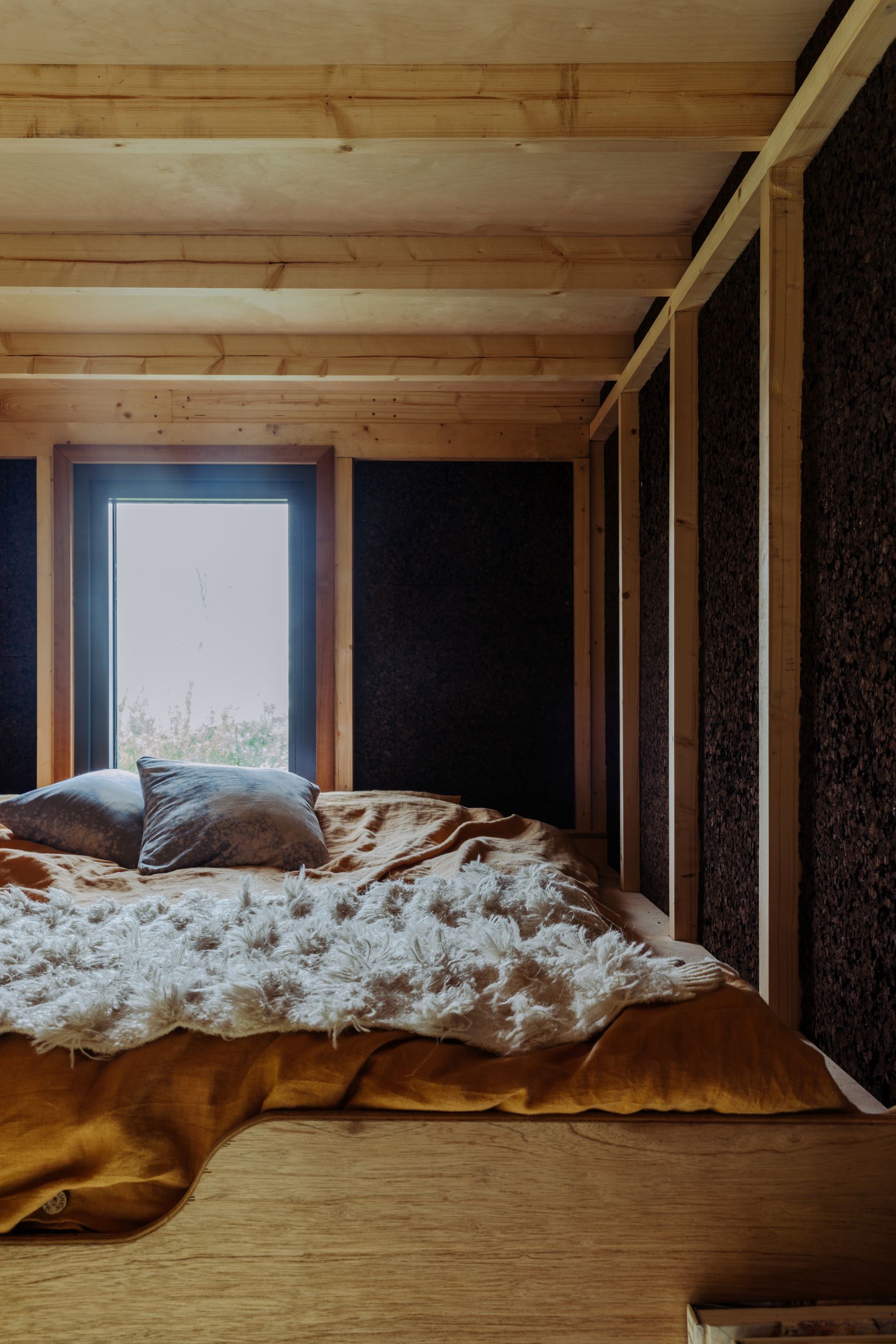
‘We haven’t created these Tiny Homes as a new product,’ explains Fionn Kidney, co-founder and director of Common Knowledge. ‘We’ve actually only made four, but we have taught more than 250 people to build them on their own by involving them in the construction process during our Build Schools.’
The project is also about showcasing sustainable, quality materials that the team strongly believe should be more widely used.
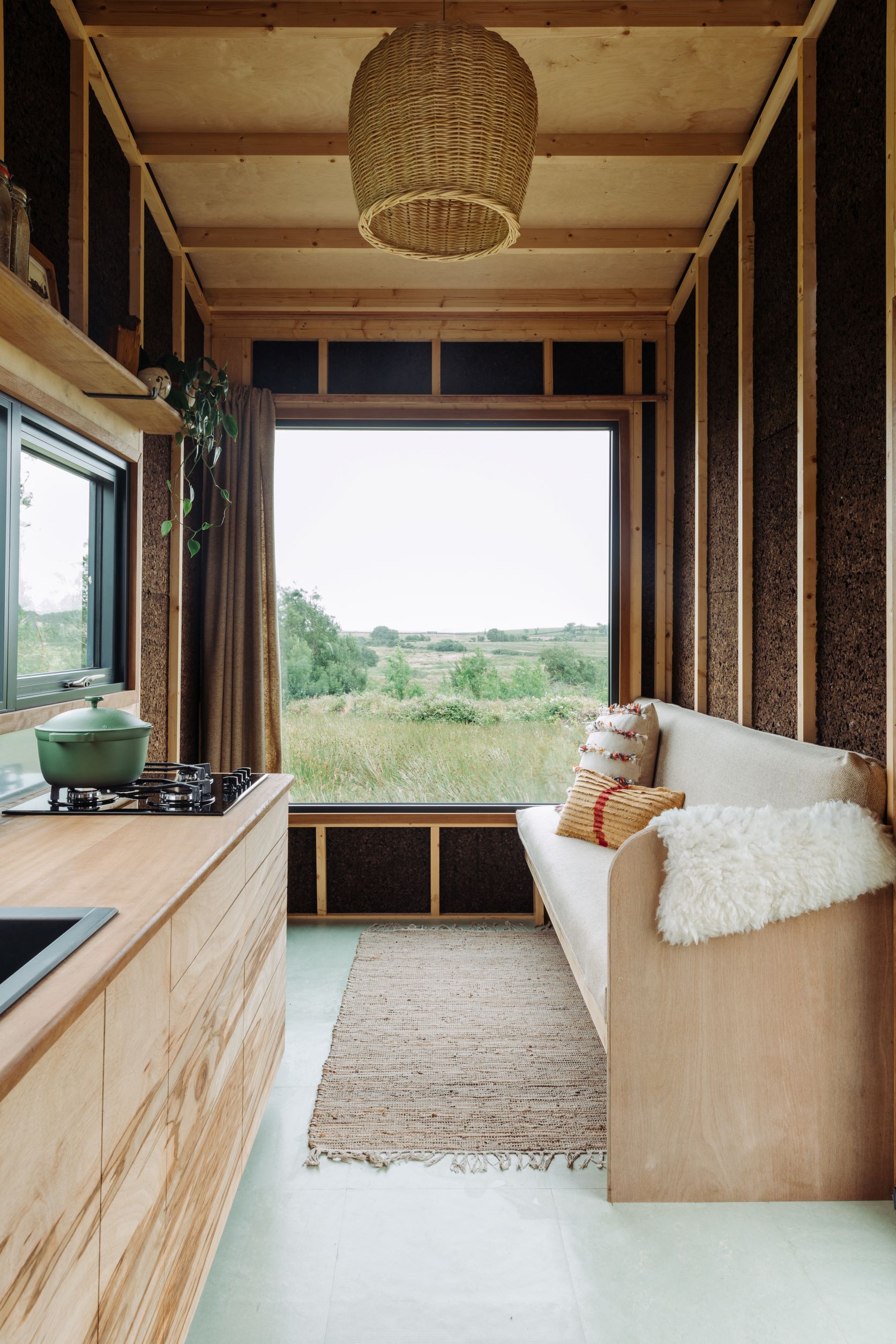
These Tiny Homes are different in another way too. Though their footprint is small (20 sq m), they have tall ceilings (3.6m in the kitchen and living room areas), which, combined with oversized glazing, provide a constant connection to nature or views, while giving the sensation of more space. The homes also have clever storage solutions and use innovative or natural materials such as hemp corrugated panels and natural rubber linoleum floor tiles, in part to meet their own self-imposed low-emissions construction targets but also to keep the weight of the trailer down.
‘By choosing materials like natural cork insulation, planed dimensional lumber and marine-grade plywood, we were able to make our structural elements of the building also be our finishing touches,’ explains Harrison Gardner, who is behind the design and construction of the Tigín Tiny Homes. ‘Hardwood countertops and custom couches were made possible by us not wasting any of our weight allocation in plasterboard finishes.’
Wallpaper* Newsletter
Receive our daily digest of inspiration, escapism and design stories from around the world direct to your inbox.
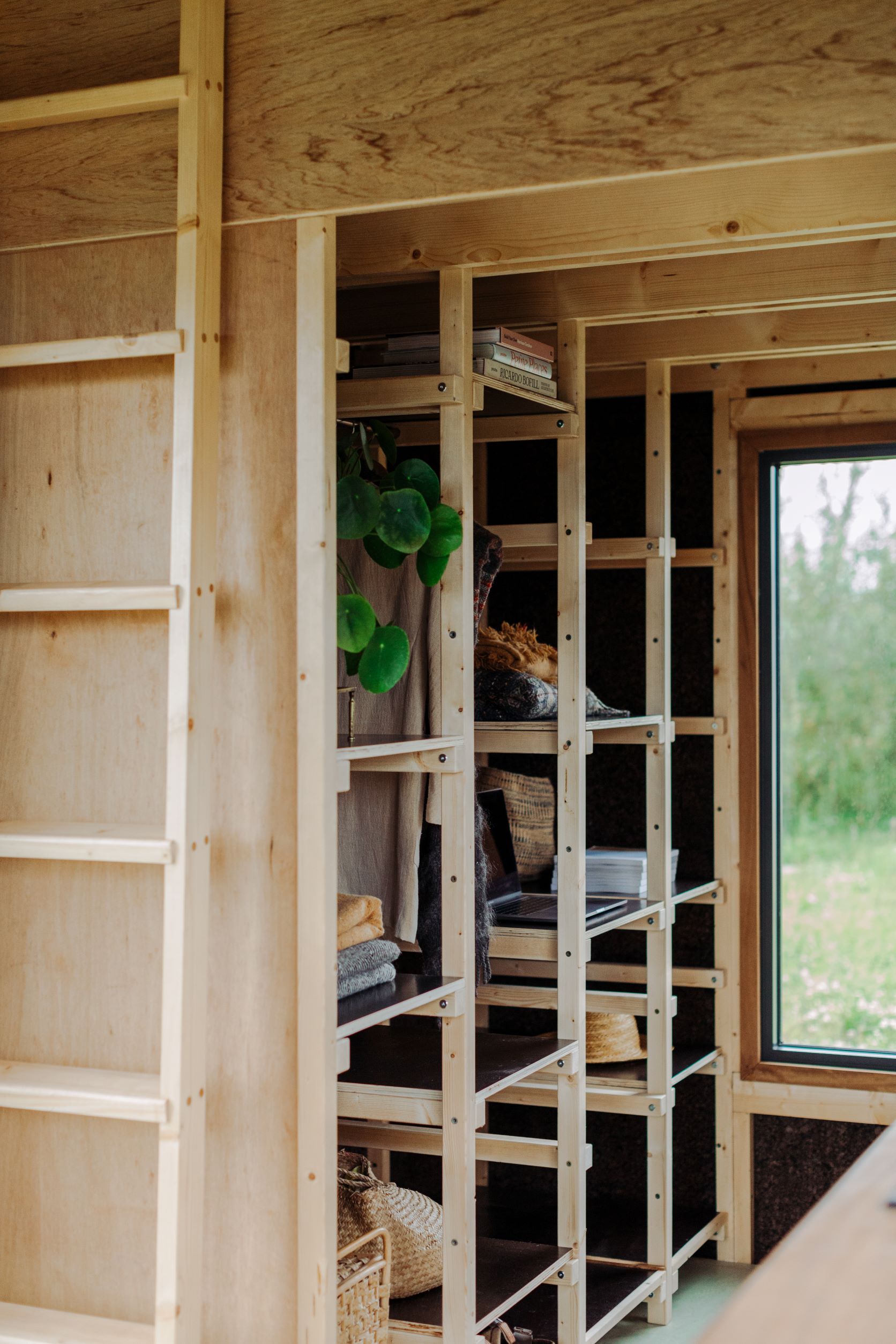
One area the team found hard to keep lightweight was the external cladding. The contemporary modern finishes of concrete board were too heavy, while all the affordable timber options also pushed them over the limit. In the end, they opted for hemp cladding, a natural alternative to corrugated steel, grown and supplied by Margent Farm in Cambridgeshire, England.
‘It was almost half the weight of some of our other options, was grown relatively locally (as far as cladding sources go) and is made of an extremely sustainable, carbon-negative material,’ says Gardner.
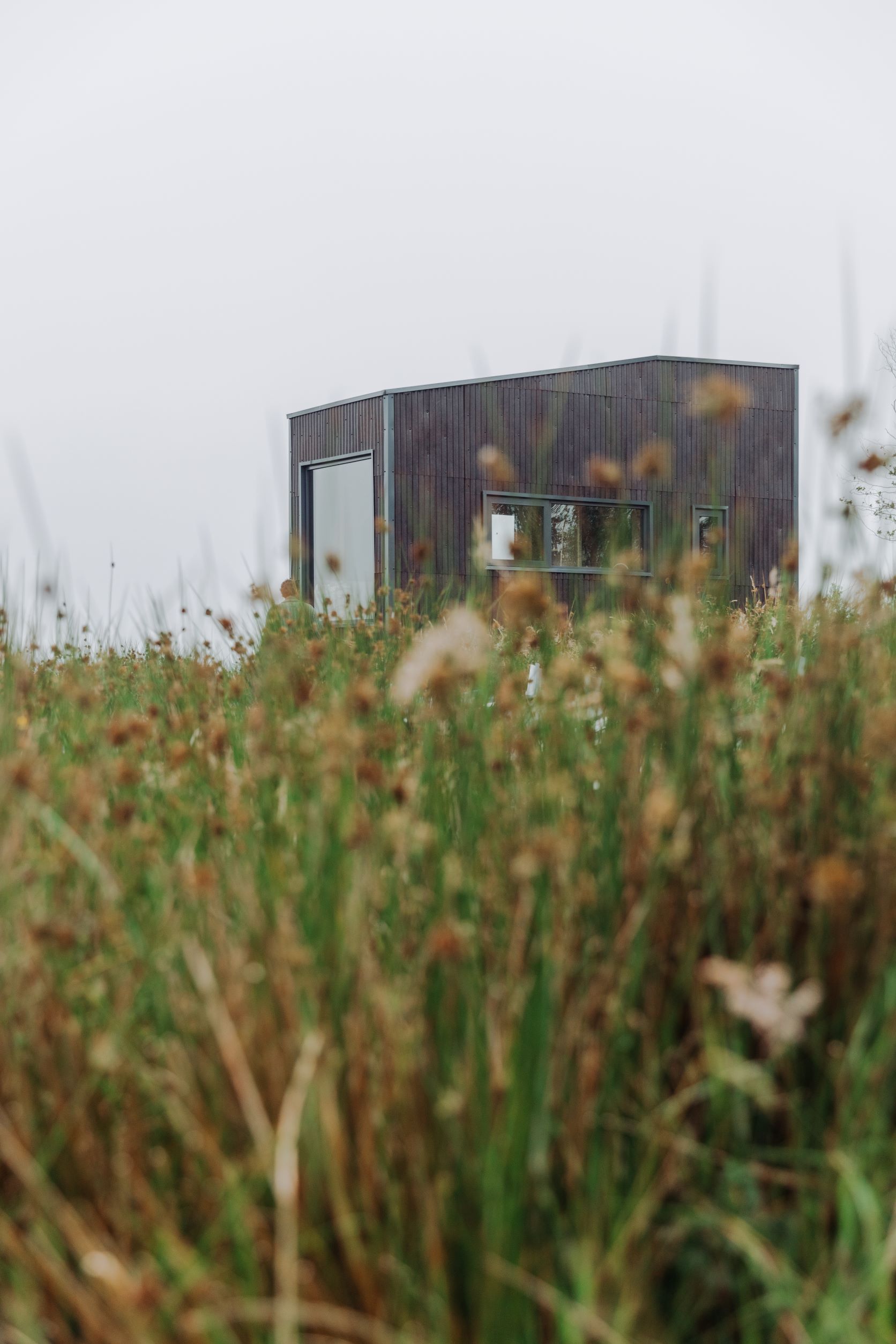
The Common Knowledge team are honest about how their micro homes will be used. ‘We see the Tiny Homes as the potential first step for many onto the housing ladder and believe they will suit certain people and certain stages of their lives,’ says Gardner. ‘Individuals or couples craving independence but not yet able to afford their forever home will find the Tigín to be a comfortable housing solution for several years, somewhere they can live rent-free and save towards the home of their future.’
When residents are able to graduate to their forever homes, the idea is they will take some of the Tiny Homes’ material palette and building know-how with them.
INFORMATION
Giovanna Dunmall is a freelance journalist based in London and West Wales who writes about architecture, culture, travel and design for international publications including The National, Wallpaper*, Azure, Detail, Damn, Conde Nast Traveller, AD India, Interior Design, Design Anthology and others. She also does editing, translation and copy writing work for architecture practices, design brands and cultural organisations.
-
 Extreme Cashmere reimagines retail with its new Amsterdam store: ‘You want to take your shoes off and stay’
Extreme Cashmere reimagines retail with its new Amsterdam store: ‘You want to take your shoes off and stay’Wallpaper* takes a tour of Extreme Cashmere’s new Amsterdam store, a space which reflects the label’s famed hospitality and unconventional approach to knitwear
By Jack Moss
-
 Titanium watches are strong, light and enduring: here are some of the best
Titanium watches are strong, light and enduring: here are some of the bestBrands including Bremont, Christopher Ward and Grand Seiko are exploring the possibilities of titanium watches
By Chris Hall
-
 Warp Records announces its first event in over a decade at the Barbican
Warp Records announces its first event in over a decade at the Barbican‘A Warp Happening,' landing 14 June, is guaranteed to be an epic day out
By Tianna Williams
-
 Joseph Walsh’s ‘Making In’ design symposium brings global talents to southern Ireland
Joseph Walsh’s ‘Making In’ design symposium brings global talents to southern IrelandMaking In 2024’s theme – ‘the circle’ – is unpicked by Shigeru Ban, Jeremy Irons, Iris van Herpen and Glenn Adamson
By Ellen Himelfarb
-
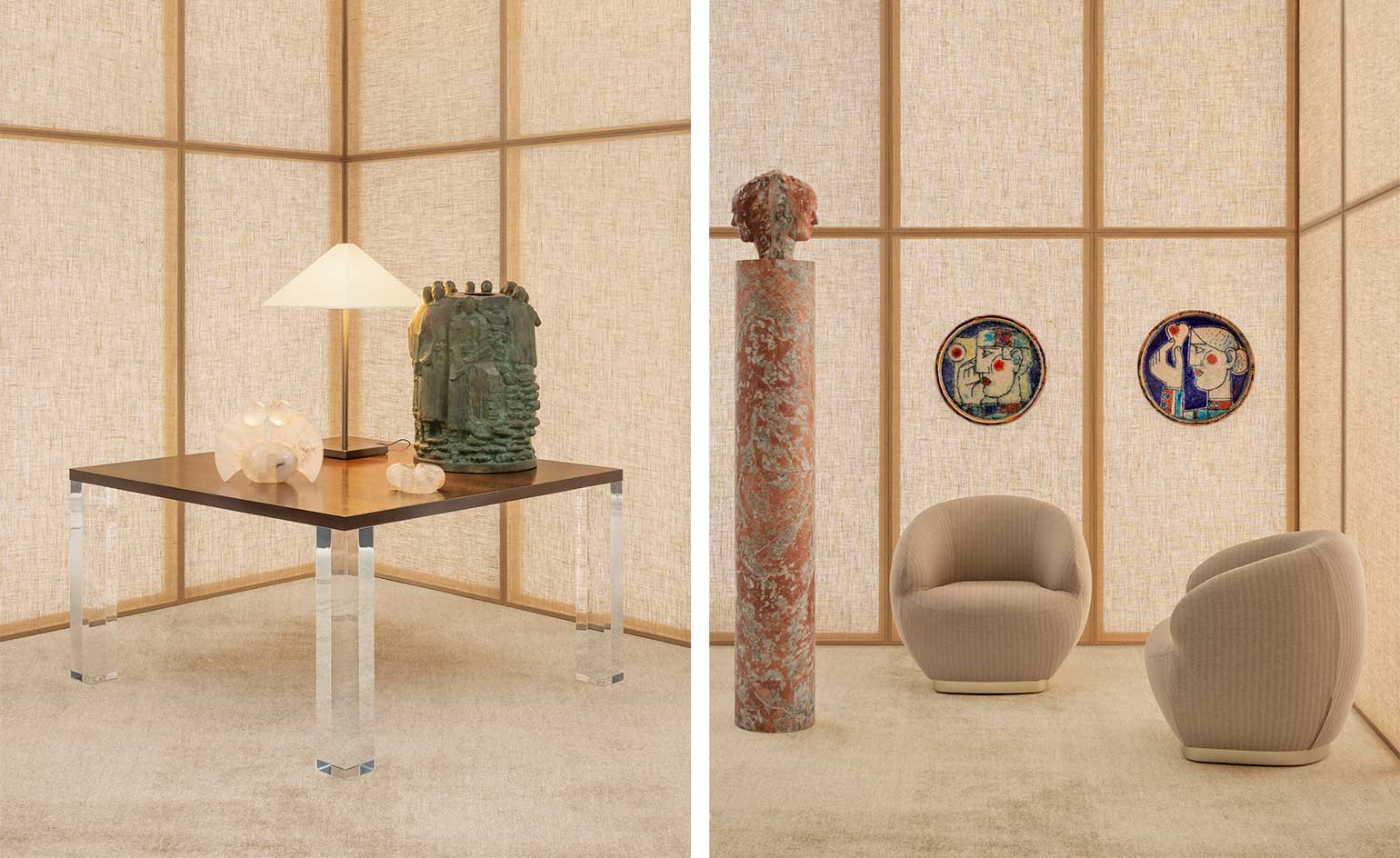 Art, artefacts and Armani Casa: step into our Made in Italy showcase
Art, artefacts and Armani Casa: step into our Made in Italy showcaseIn this photographic series, we combine Armani Casa’s timeless furniture collections with Italian art and rare artefacts to tell the story of Made in Italy craftsmanship
By Nick Vinson
-
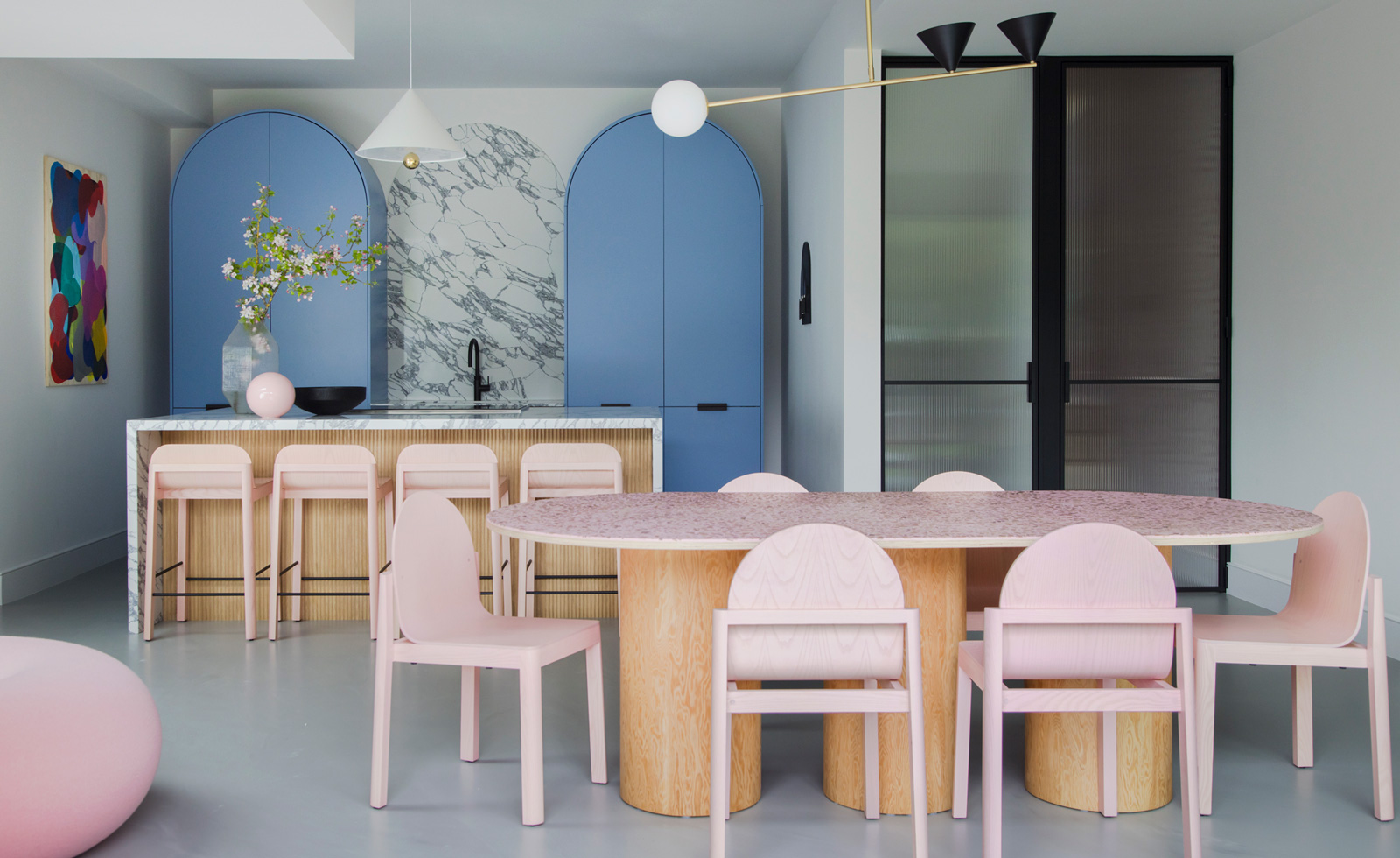 Playful design codes rule in this London Victorian family home
Playful design codes rule in this London Victorian family home2LG Studio embraces colour and comfort in an extensive renovation of a Victorian family home
By Hannah Silver
-
 Design at the White House: the creatives working with US Presidents past and present
Design at the White House: the creatives working with US Presidents past and presentInterior designers, fashion designers and artists, whose collaborators have included the White House and its residents, with commissions that range from interior refits to presidential portraits
By Pei-Ru Keh
-
 Essx store opens in New York’s Lower East Side
Essx store opens in New York’s Lower East SideEssx is a new concept and community store by local architecture firm Leong Leong and designer Yossi Shetrit
By Pei-Ru Keh
-
 Eastside Bowl scores big with a maximalist postmodern aesthetic
Eastside Bowl scores big with a maximalist postmodern aestheticDesigned by Cowboy Creative, Eastside Bowl in Nashville, Tennessee, combines American nostalgia and southern charm
By Pei-Ru Keh
-
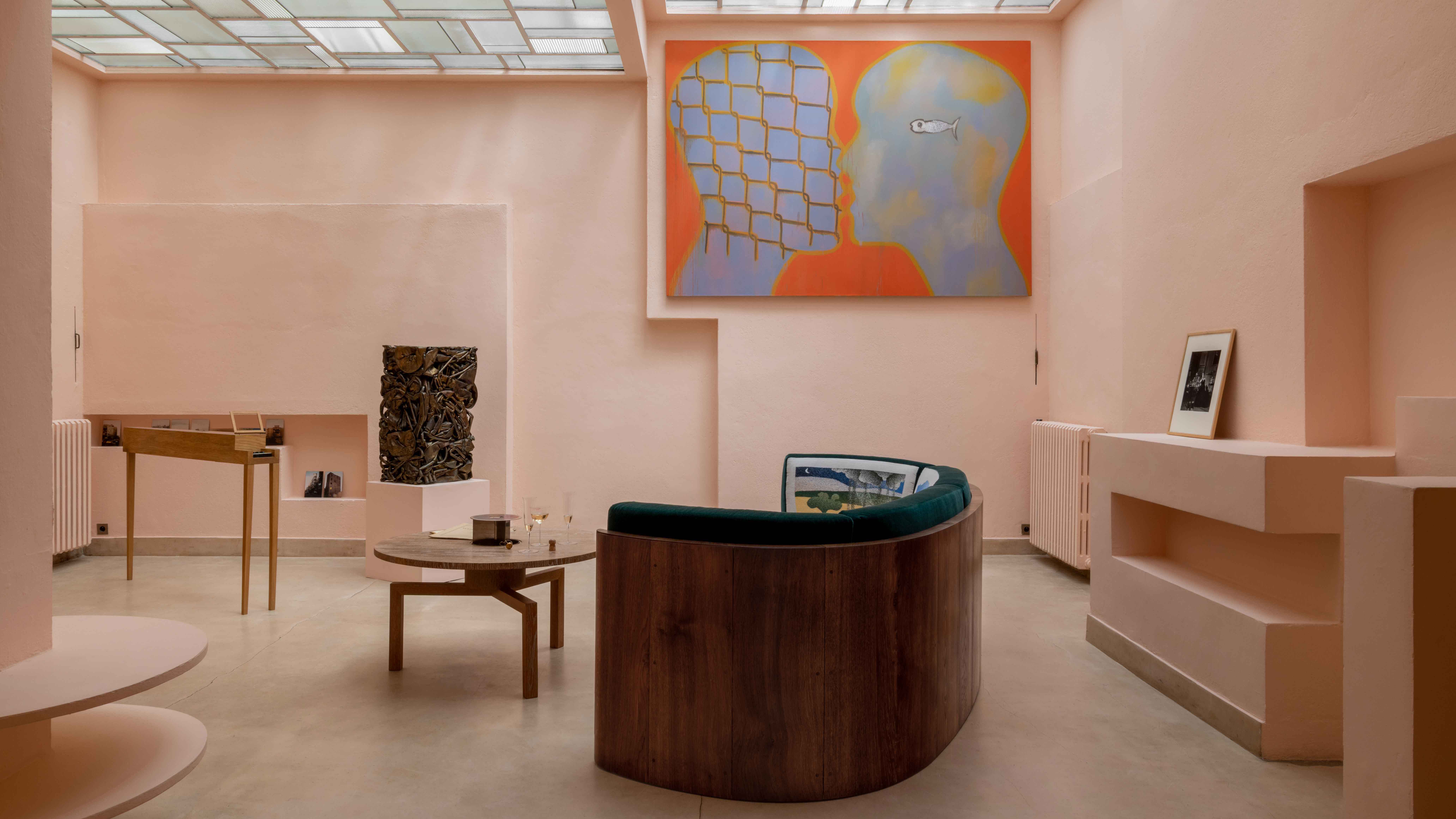 The Design Parade kicks off a creative Summer in the French Mediterranean
The Design Parade kicks off a creative Summer in the French MediterraneanDesign Parade 2023, set between Hyères and Toulon until the fall, features a showcase of design by emerging and established talent
By Jean Grogan
-
 This Los Angeles bolthole by Masastudio and Kelly Wearstler is a carefully considered gem
This Los Angeles bolthole by Masastudio and Kelly Wearstler is a carefully considered gemLaid out like a village, the first collaboration between LA-based Masastudio and Kelly Wearstler is a sculptural family home inspired by Mediterranean architecture
By Pei-Ru Keh